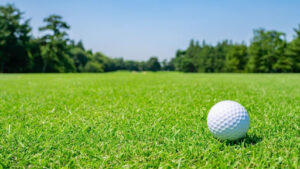
Have you ever wondered what makes a golf course green so pristine and playable? The secret lies beneath your feet—the grass. Selecting the right turf for a golf course isn’t just about aesthetics; it’s about playability, durability, and maintenance. The right grass can elevate the golfing experience while keeping costs manageable for course managers.
Factors to Consider When Choosing Golf Course Grass
Selecting the best grass type for your golf course depends on several critical factors. These include climate, soil conditions, maintenance capabilities, and the type of play the course accommodates. Here’s a breakdown of each factor:
- Climate Suitability
Grass species thrive in different climates. Warm-season grasses like Bermuda and Zoysia are popular in southern regions, while cool-season varieties like Bentgrass excel in northern climates. Consider whether your area experiences extreme temperatures, humidity, or drought conditions. - Soil Quality
Different grasses perform best in specific soil types. Conduct soil testing to assess pH levels, nutrient content, and drainage. This ensures the grass can root deeply and remain healthy year-round. - Wear and Tear
Golf courses endure heavy foot traffic, club impact, and environmental stress. Opt for durable varieties that can recover quickly from wear and provide consistent playability. - Maintenance Requirements
Maintenance costs, including mowing, irrigation, and fertilization, should align with your budget. Some grass types, like Bimini Bermuda, are low-maintenance yet offer excellent durability and aesthetics.
Popular Golf Course Grass Types
Several grass types have proven to be reliable choices for golf courses. Each has unique strengths and weaknesses, making it essential to choose the right one for your needs.
- Bermuda Grass
Known for its resilience and adaptability, Bermuda grass thrives in warm climates and full sun. Its dense growth pattern minimizes weeds, and its fast recovery rate makes it ideal for high-traffic areas. Among Bermuda varieties, Bimini Bermuda is a standout, offering fine texture and vibrant color, perfect for fairways and greens. - Zoysia Grass
Zoysia grass is another excellent choice for warm regions. It tolerates drought and heavy traffic, making it suitable for fairways. The comparison of Bermuda grass vs. Zoysia often comes down to texture and maintenance—Bermuda grows faster, while Zoysia requires less mowing. - Bentgrass
Bentgrass is a cool-season favorite, often used on putting greens due to its fine texture and smooth surface. However, it requires higher maintenance, including frequent mowing and consistent irrigation. - Fescue
A versatile cool-season grass, fescue works well in roughs and less manicured areas. Its tolerance for shade and drought makes it a practical option for courses with varied conditions.
Comparing Bermuda Grass and Zoysia
When deciding between Bermuda and Zoysia, understanding their differences helps course managers make informed decisions. Bermuda grass grows quickly and recovers rapidly from damage, making it ideal for fairways and tees. Zoysia, on the other hand, has a slower growth rate but offers better shade tolerance and requires less water. The decision ultimately depends on the specific needs of the course and the maintenance resources available.
Tips for Maintaining Golf Course Grass
Once you’ve selected the right grass, proper maintenance ensures its longevity and playability. Here are some essential tips:
- Irrigation Management
Watering schedules should align with the grass’s needs. Overwatering leads to shallow roots, while underwatering can cause stress and thinning. - Fertilization
Use soil test results to develop a fertilization plan. Balanced nutrients help the grass stay vibrant and resilient. - Mowing Practices
Keep mowing heights consistent to avoid stressing the grass. Each species has an optimal mowing height—follow these guidelines to maintain healthy turf. - Aeration and Overseeding
Aerate the soil regularly to improve root health and reduce compaction. Overseeding helps fill bare spots and ensures an even playing surface.
Finding Quality Grass for Your Golf Course
Sourcing high-quality turf is just as crucial as selecting the right species. When searching for grass for sale, work with reputable suppliers who provide certified seed or sod. This ensures you’re getting the right variety for your course’s specific requirements.
Why Grass Selection Matters
Grass choice directly impacts a golf course’s success. Players expect smooth fairways, true greens, and roughs that challenge without frustrating. Proper grass selection enhances playability and improves the course’s reputation, attracting more golfers and boosting revenue.
Conclusion
Choosing the best golf course grass type is both an art and a science. By evaluating factors like climate, soil, and maintenance needs, you can select a turf that not only looks great but also performs under the toughest conditions. Whether you prefer the fast recovery of Bermuda grass or the low-maintenance appeal of Zoysia, the right grass ensures your course stands out.
Remember, investing in the right grass upfront pays dividends in playability, aesthetics, and long-term maintenance savings. So, the next time you step onto the green, appreciate the thought and care that goes into creating the perfect turf.
